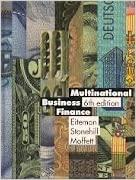(Payback period and NPV calculations) Plato Energy is an ol and gas explorafon and development conpany locatod in Facmington, New Mexico. The company deils shallow wells in hopes of and the other is in the Guif Coast. The Barnett Shale project requires a much larger inital investment but provides cash fows (f supcesstuf) over a much longer ponod of time than the Gut Coest This expenditure involves pumping either water or CO2 down into the wels in order to increase the flow of ol and gas from the structure. The oxpected cash flows for the two projects are as follows 2. What is the paytack period for each of the two projects? b. Based on the paytack periods, which of the two projects appears to be the bett alternetive? What are the limitations of the payback period ranking? That is, what does the payback penod not consider that is important in defermining the value creation potential of these two projects? c. If Plato's management uses a discount rate of 20.5 percent to evaluate the present values of its energy investment projects, what is the NPV af the two proposed investrents? d. What is your eshimate of the value that wil be created for Plato by the acceptance of each of these tao imestments? a. Given the cash fow information in the tabie, the paytack period of the Barnett Shale profect is years. (Round to twa deomal places) a. Given the cash flow information in the table, the payback period of Project A is years. (Round to two decimal places.) If the firm requires a 3-yaar payback, before an investrient can be acoepted, the firm should payback period. (Select from the drop-down menus.) Project A because its payback period is the maximum acceptable The payback period of Project 8 is years. (Round to two decimal places.) If the firm requires a 3 year payback before an investment can be accepted, the firm should Propect B because its payback period is the maximum acceptablo payback. period. (Select from the drop-down menus) The poyback period of Propect C is years. (Round to two decinal places.) If the firm fequires a 3-year paybock before an invostment can be accepted, the firm ahould Prowet C because its paytack penod is the maximum acceptabien payback pariod. (Select frem the drop-down menus) b. Pank the three propocts using their payback penod. The project with the shortust payback period is The propect with the second shortest paytack period is The project with the longast payback period is the project which looks best ueing the payback criterion in (Select from the drop-down menus.) Do you agee wer this ranking? Why or why not? (Seledt the best choibe below.) A. No, the payback method ignores cash fows that are generated by the project beyond the and of the payback penod. you agree with this fanking? Why or why not? (Select the best choice below.) A. No, the payback method ignores cash flows that are generated by the project beyond the end of the paytack period. 3. No, there is no clear-cut way to define the cutolt criterion for the payback period that is tied to the value creation potontial of the inwestrnent. C. No, the pirytack method ignores the time value of money. 19. All of the above. Given the cash fiow information in the table and the discouint rate of 9.5%, the discounted payback period of Projoct A is years. (Round to two decimal places) the firm requires a 3-year paytack before an investrient can be accepted, the firm should Project A because its discounted payback periodi voceptable payback period (Select froen the drep-down menus.) The discounted payback period of Project B in year. (Round to two decimal places.) If the firm requires a 3-year payback before an investinent can be accepted, the firm should Propet B because its discounled payback period is aconptable paytack period. (Select from the drop-down menus.) The discounted paytack period of Project C is years. (Round to two decimal places.) If the firm mouires a 3-year payback before an investrnent can be accepted, the firm should Project C because its discounted paytack period is accoptabio powback period (select froen the drop-down neneys)









